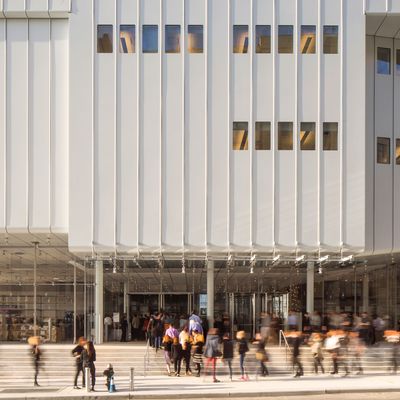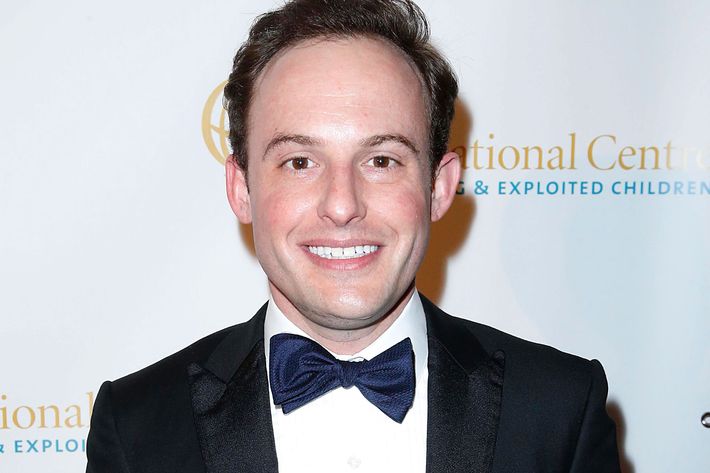
ItÔÇÖs been not a month since the big boatlike Whitney Museum of American Art dropped anchor on the Hudson, and the institution is already rejiggering its curatorial leadership.
At a meeting with the board of trustees on May 19, director Adam Weinberg announced that Scott Rothkopf, 38, is getting a promotion to chief curator. Currently the his new title will be deputy director for programs and Nancy and Steve Crown family chief curator. The current chief curator, Donna De Salvo, will be moving into a newly created position: deputy director for international initiatives and senior curator.
ÔÇ£Now that the institution is growing in both size and complexity, we needed more firepower, more oomph,ÔÇØ Weinberg told SEEN. ÔÇ£What it does is give us more strength at the artistic top of the organization.ÔÇØ
Rothkopf made a swift rise to the top of the curatorial heap, having joined the museum in 2009 after serving as a senior editor of Artforum and doing his graduate work at Harvard. His status rose considerably last summer when ÔÇ£Jeff Koons: A RetrospectiveÔÇØ ÔÇö which he curated ÔÇö took over the entire Breuer Building. It was a popular and critical success (the museum opened six days a week to accommodate the crowds), but as much as anything an incredible feat of ego choreography,┬áKoons and his collectors are as complicated as they come.

ÔÇ£IÔÇÖm thrilled to be leading the curatorial team at this amazing time for the museum,ÔÇØ Rothkopf said when reached on the phone earlier today. ÔÇ£We basically needed more leadership at the deputy-director level, so taking on DonnaÔÇÖs former position while she is free to look into possibilities for the institution was a way to increase the leadership capacity.ÔÇØ
(Rothkopf apologized that he could only speak for a few minutes, as he was about to give a private tour to some very high-level VIPs: his mother and father, who just got in from Texas.)
De SalvoÔÇÖs new role emerged from the two trends: the growing interest in American artists at overseas institutions, and the expected spike in international visitors to the Whitney with its even-more-tourist-friendly location by the High Line.
ÔÇ£ItÔÇÖs really interesting how many artists in the collection are not known outside the U.S., but thatÔÇÖs changing,ÔÇØ┬áDe Salvo said over the phone. ÔÇ£The network has always been there but now itÔÇÖs really accelerated.ÔÇØ
And no, this doesnÔÇÖt mean the Whitney is going full Guggenheim and launching a fleet of mini-museums the world over.
ÔÇ£What IÔÇÖm going to say to the trustees is, itÔÇÖs not about turning the Whitney into some kind of franchise,ÔÇØ Weinberg said. ÔÇ£ItÔÇÖs about how can we work with other institutions┬áon shows, as weÔÇÖve done in the past.ÔÇØ
RothkopfÔÇÖs ascent has long since seemed inevitable both inside and outside of the museum, and it should keep him at the Whitney at a time when there are any number of other jobs open elsewhere. Meanwhile, De Salvo now gets to focus on curating shows again while inhabiting a interesting new role that builds on her global connections (she was once a senior curator at the Tate Modern).
Once the change takes place July 1, Rothkopf will have ultimate curatorial oversight, skippering the expansion of the museumÔÇÖs collection, its exhibition schedule, and ongoing performance programming.
ÔÇ£I met Scott when he was a Whitney intern when he was at Harvard years ago, so IÔÇÖve watched him grow,ÔÇØ Weinberg said. ÔÇ£From my point of view, heÔÇÖs one of the great curators of his generation ÔÇö anywhere.ÔÇØ
For a look at RothkopfÔÇÖs curatorial skills and techniques, see that time he gave SEEN a tour of the WhitneyÔÇÖs inaugural exhibition, ÔÇ£America Is Hard to See,ÔÇØ with an eye toward the showÔÇÖs most memorable and intriguing installation choices.

